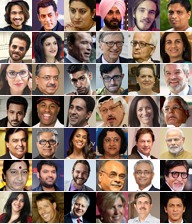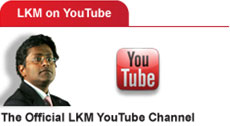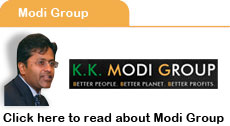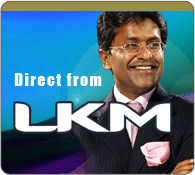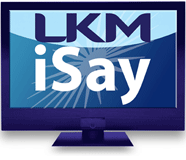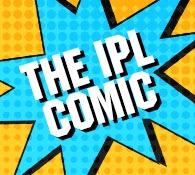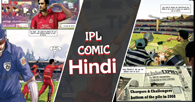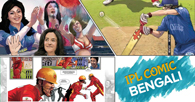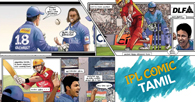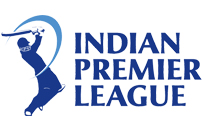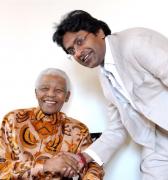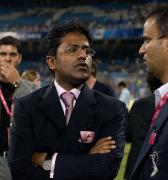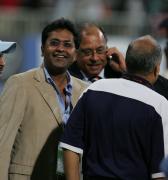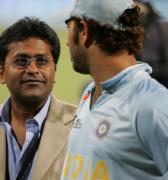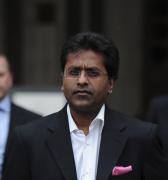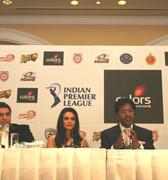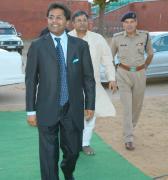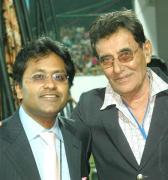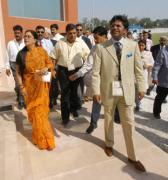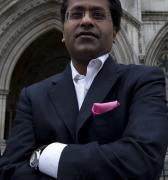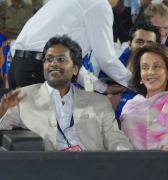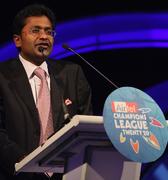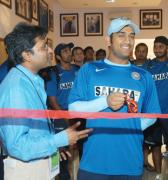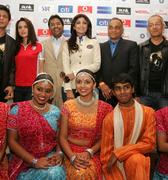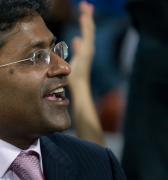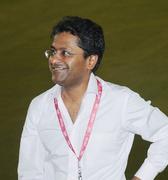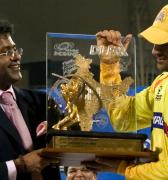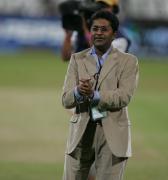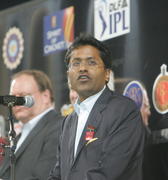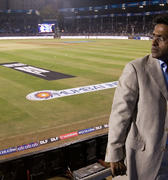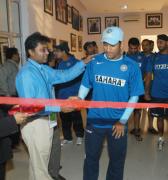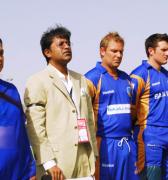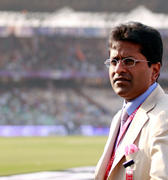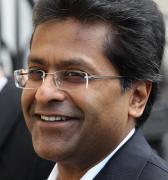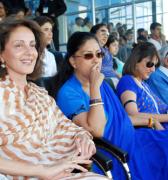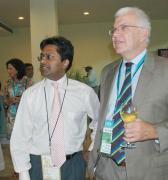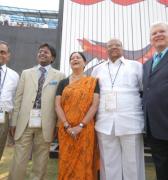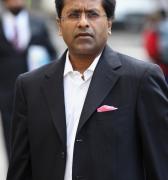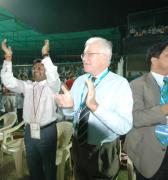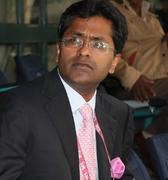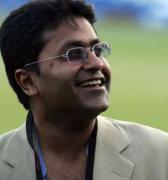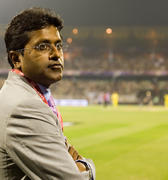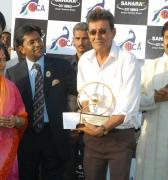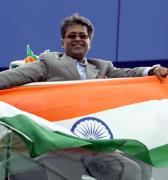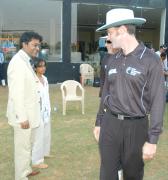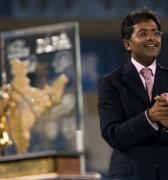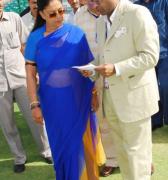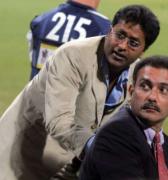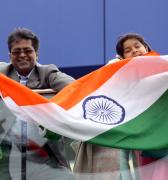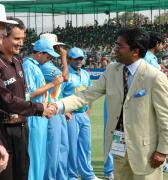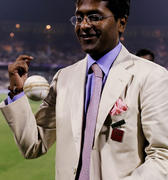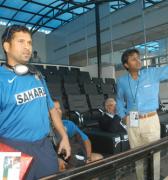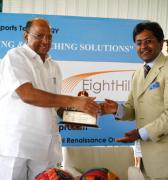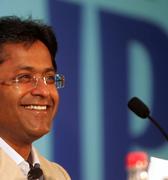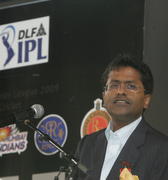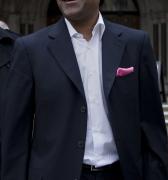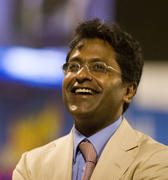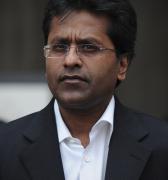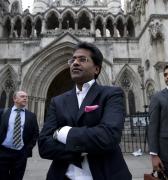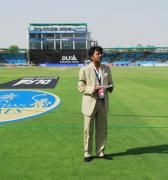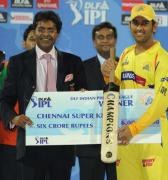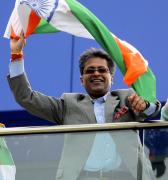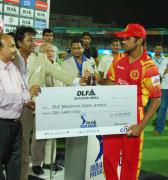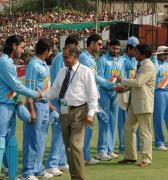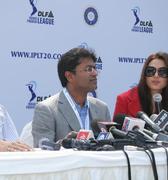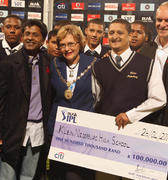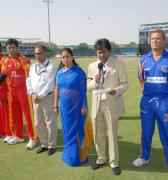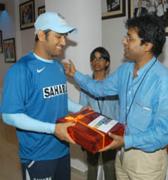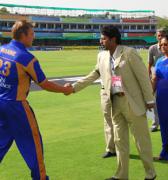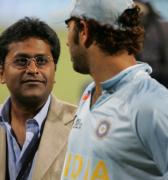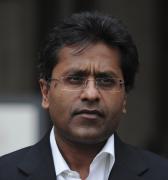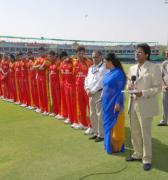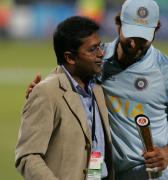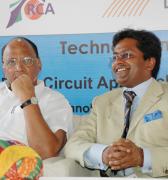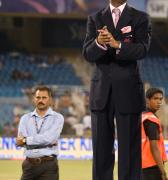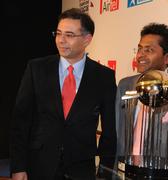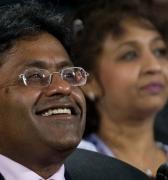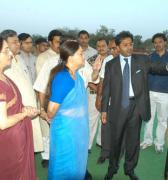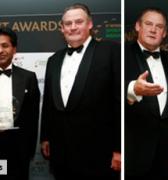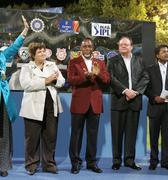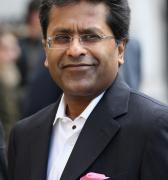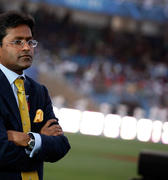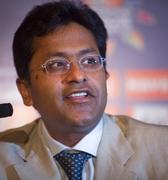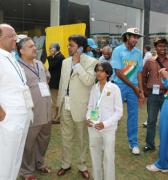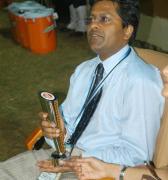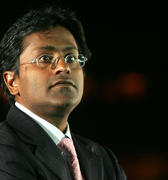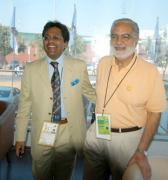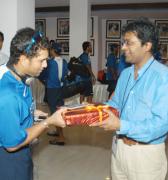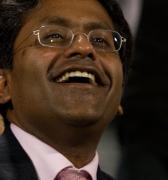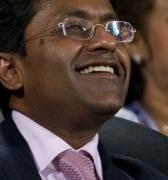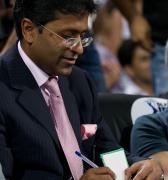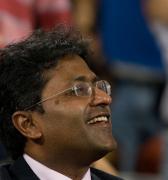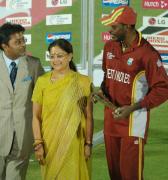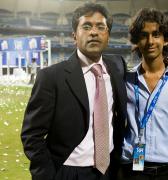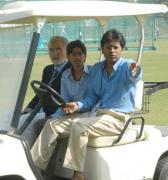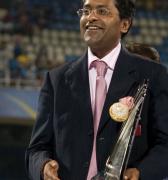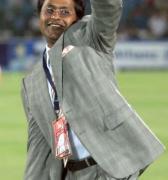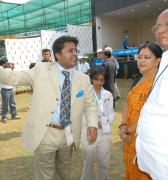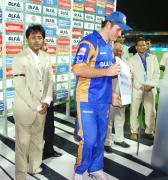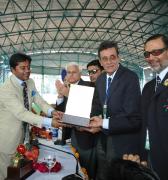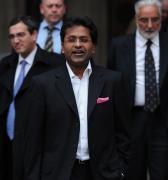IPL Facts
A look at what the Indian Premier League achieved in its first three years of existence and how the world saluted India's first world-class sports league.
- The Indian Premier League IPL was launched on September 13, 2007. Cricket was never the same again.
- The challenge was 2 build sustainable business model, incentivise players, broadcasters, franchises & cricket boards to join. All in 7 months
- The biggest names were present at launch – Sharad Pawar, Tendulkar, Dravid, Ganguly, Kumble, McGrath &Fleming.
- The league was run by a governing council comprising former Indian captains Ravi Shastri, Sunil Gavaskar, MAK Pataudi, BCCI office-bearers Rajiv Shukla, Chirayu Amin, Inderjit Singh Bindra, and Arun Jaitley with Lalit Modi as convenor
- Matches were to be played on a home-and-away basis guaranteeing seven matches at each venue
- Winning bidders for the eight franchises were announced on 24 January 2008.
- Eight franchises paid between $67m to $111.9m to own teams.
- The top 100 cricketers of the world were signed on. Total base price for auction was US $400 million, the auction fetched $723.59 million.
- BCCI earns approximately $ 1.75 billion from TV rights, $ 908 million from promotions and $ 700 million from franchises.
- The title sponsorship race was between DLF Limited, World Sports Group (WSG) (on behalf of Hero Honda Motors), Percept D’Mark and 21st Century Media
- On February 13 2008 DLF won the title sponsorship rights for five years, valuing in excess of Rs 200 crores
- Total spend cap for franchisee in 1st player auction: US $5 million.
- Under-22 players were to be remunerated with a minimum annual salary of US $20,000 while for others it was US $50,000.
- The auctions were conducted on 20 February 2008 with Mahendra Singh Dhoni winning the highest bid of US$1.5 million
- Brendon McCullum's 158 lit up the first ever match of the IPL when RCB played KKR, who won the exciting game.
- McCullum's 158 came off 73 balls with 10 fours and 13 sixes @ strike rate of 216. Just what the IPL needed!
- The inaugural match recorded staggering TRP of 8.21.
- IPL’s creation in 2008 ushered a new wave of professional T20 leagues around the world
- IPL 2008 brought women close to cricket. An amazing TRP of 6.7 was recorded for the inaugural IPL match.
- The IPL Trophy was a diamond-studded beauty, adorned with rubies as well as yellow and blue sapphires.
- Citibank was named “Official Bank of the IPL
- The inaugural season of the tournament started on 18 April 2008 and lasted for 43 days with 59 matches scheduled, out of which 58 took place and 1 was washed out due to rain.
- Every team played each other both at home and away in a round-robin system.
- The top four ranking sides progressed to the knockout stage of semi-finals followed by a final
- The final was played in DY Patil Stadium, Nerul, Navi Mumbai.
- Rajasthan Royals defeated CSK in a thriller of a final and emerged as the inaugural IPL champions.
- Shane Watson was player of tournament.
- Pakistan’s Sohail Tanvir won the purple cap for being the top wicket-taking bowler.
- Aussie Shaun Marsh won the orange cap for leading run-scorer in the tournament
- Shreevats Goswami was awarded the best under-19 player
- The governing body declares a gross income of Rs 645 crore in the first edition and a profit of Rs 51 crore
- Sony catapulted to No.1 channel in viewership during the 8pm to 11pm slot, zooming nearly eightfold to 16.8 per cent according to a-MAP
- The IPL 2008 was received with much fanfare and interest across the Test playing nations.
- Wisden 2009: Notes by the Editor (Scyld Berry)
The IPL is a clever mixture of ingredients because its administrators have understood their market - their mass market.
- WISDEN 2009: Although it is impossible to be sure from such a recent perspective, it looks as though the supranational IPL is the single biggest change in cricket not merely since the advent of the limited-overs game in the 1960s but of fixtures between countries in the 19th century: that is, since the invention of international or Test cricket.
- In 2009, Rajasthan Royals sold a 11.7% stake for approx US$15.4 million to Shilpa Shetty & Raj Kundra, a UK-based businessman.
- It put the valuation of the RR franchise at around $140 million, more than double the $67 million the owners paid for it in 2008.
- The IPL was well received with much fanfare and interest across the Test playing nations.
- The 2009 Indian Premier League season was hosted by South Africa because of the General Elections in India from 18 April-24 May 2009
- IPL 2009 was forecast to have an estimated television audience of more than 200 million people in India alone.
- The final of IPL 2009 drew viewership to almost 11.3 million
- Total viewers of IPL 2009 were estimated at 90 million
- Cumulative viewership of the IPL rose from 102.5 million in 2008 to 123.5 million in 2009
- The visibility of advertising in all forms on TV rose by 30% from 482 hours in 2008 to 625 hours in 2009.
- The 2009 Indian Premier League Players Auction was held on 6 February 2009 in Goa, India.
- A total of 43 players from 9 countries were shortlisted for the auction.
- However, only 17 of them were sold.
- The English duo of Kevin Pietersen and Andrew Flintoff each went for US$ 1.55 million, which made them the highest-paid cricketers in the IPL.
- On 24 March 2009, the BCCI announced that the second season of the IPL will be held in South Africa
- The players purchase cap was increased from 5 to 7 million
- The IPL injected approximately US$100 million into South Africa’s local economy
- The format of the tournament remained unchanged from the 2008 season format
- BCCI renegotiated and signed a Rs. 8,200 crores (US$1.63 billion) contract with Multi Screen Media in 2009.
- The number of international players allowed in any one squad was increased from 8 to 10
- The number allowed in any playing 11 remained at 4
- The players purchase cap was increased from 5 to 7 million
- The BCCI also negotiated with the ECB to allow English cricketers to participate in the 2009 edition of the IPL
- English players were allowed to play for 21 days in between their tour to West Indies and the subsequent return tour
- At the halfway point of each innings, a seven-and-a-half minute television timeout was now held
- Cape Cobras and Rajasthan Royals played what was called the “Clash of the Champions” as dress rehearsal
- Deccan Chargers defeated Bangalore Royal Challengers in the final (these two were 8th and 7th respectively in the previous edition)
- Left-arm bowler of the Deccan Chargers RP Singh won the Purple Cap for IPL 2009 with 23 wickets
- Southpaw Matthew Hayden of the CSK scored 572 to win the IPL Orange Cap in 2009
- Columbia Case Works did a case study on the IPL.
- IPL provided 10m rands in scholarship funds to 300 students and 32 schools across South Africa in 2009.
- The IPL injected approximately US$100 million into South Africa’s local economy
- The third season returned to India to a grand welcome.
- IPL’s brand value doubled in 2010 to reach $4.13 billion according to UK-based consultancy firm, Brand Finance.
- IPL became sixth most valued sports brand according to a study conducted by Sports Pro magazine in 2009. IPL was valued at $1.6 billion
- The IPL was valued higher than ManU $1.495bn and Ferrari $1.55bn
- It was the first IPL tournament that was broadcast live on YouTube.
- The final four matches of the tournament were screened in 3D across movie halls in India.
- Chennai Super Kings defeated Mumbai Indians in the finals to win their first title.
- Apalya, the official Mobile TV partners of IPL 2010, witness exponential growth with mobile TV subscriber base jumping 32% in just the first 15 days.
- On 21 March 2010, Pune and Kochi were unveiled as the two new franchises for the fourth edition of the Indian Premier League at base price of $225 million
- While Pune was bought by Sahara Adventure Sports Group for $370 million, the Kochi franchise was bought by Rendezvous Sports World Limited for $333.3 million.
- The player auction was held on 19 January 2010 in Mumbai, India.
- 97 players from cricket playing countries other than India, registered for the auction.
- The list of players was then shortlisted by the franchises to 66 players.
- In the tiebreakers, Kolkata Knight Riders bid $1,300,000 for Shane Bond and Mumbai Indians bid $2,750,000 for Kieron Pollard.
- The players’ take was capped at $750,000 each by the IPL auction rules, with the rest going to IPL kitty
- Three Indian under-19 players, Ashok Menaria, Harmeet Singh and Harshal Patel at 800,000, were eligible to play in the competition
- The U-19 players were were chosen by a draft system.
- Brands advertising on TV increased from 28 in season 1 to 37 in the 3rd.
- 2010 the viewership surged by 41% since the inaugural season.
- The IPL brokers a deal with ITV in 2010 to usher the return of cricket on free-to-air television in the UK.
- IPL went green in 2010 partnering with United Nations Environment Programme (UNEP) for the Batting for the Environment project.
- Led by UNEP Goodwill Ambassador Sachin Tendulkar, team captains from the Deccan Chargers to the Kolkata Knight Riders made a Green Pledge to save the planet.
- The IPL tied-up with Room to Read, a global organization dedicated towards promoting & enabling education in developing countries.
- With this partnership, IPL aims to support Room to Read's mission to transform the lives of millions of children by addressing literacy and gender equality in education.
- Entertainment channel Colors presented the first ever Sahara IPL Awards held in 2010. COLORS
- Colors entered into a three-year licensing deal with the Indian Premier League in 2010.
- The deal was valued around $130 million. Colors were paying a licensing fee, 100% of which would go to the eight team owners. Colors would get revenues via advertisements.
- The purple cap in 2010 went to Pragyan Ojha of Deccan Chargers
- The orange cap and the player of the tournament award were awarded to Sachin Tendulkar of the Mumbai Indians
- Saurabh Tiwary was declared the U-23 success of the tournament
- Pradeep Sangwan was the youngest player ever to play the IPL at 17 years 179 days for the Delhi Daredevils.
- Shane Warne at 41 years 249 days was the oldest player to have played the IPL for his team Rajasthan Royals, the champions of the inaugural edition of the tournament.
- The IPL is estimated to be second only to the American National Basketball Association (NBA) league in wage costs. NBA, the annual average salary is 2.62 million, the IPL's average salary, works out to 2.5 million
- The introduction of the Spider Cam to the Indian audiences during IPL 2010 enhanced the viewership experience to a new level.
- A Brand Finance study revealed an 11%, or $460 million drop in the value of the IPL in 2011 edition.

ICC lacks strong leadership in current times: ex-CEO Lorgat
The former ICC boss said barring Khawaja's peace slogans on shoes showed ICC lacked consistency in applying its rules
Waugh warns cricket boards for ignoring Test cricket
Australia Great Warns ICC, BCCI Over 'Irrelevant Legacy'



